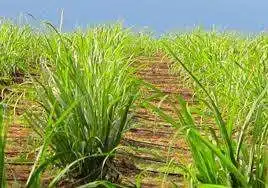
The following passage is all about Agriculture the soul of indian economy. This paragraph will give you information about agriculture and climate change, agriculture definition, agriculture information, agriculture meaning, indian economy growth. Read this paragraph to find agriculture facts, agriculture history, indian economy history, indian economy development
Agriculture The Soul of Indian Economy
Agriculture and its ancillary activities together form the largest or principal source of livelihood in India, especially for the country’s rural population. Despite the emergence and growth of the industrial and service sector, the primary sector continues to bind to itself nearly 6o% of the country’s population.
From an agricultural point of view, India has been blessed with a vast expanse of fertile land, rich soils, varied climatic conditions suited for various crops, ample sunshine and a long crop growing season. The net sown area in India today is about 143 million hectares—highest in the world. The Green Revolution of the 196os and the 197os led to the use of a high yielding variety of seeds, chemical fertilisers and modern irrigation facilities which collectively increased the yield per hectare.
“Jai Jawan Jai Kisan” meaning hail the soldier and hail the farmer, such was the importance of agriculture in the mind of the then Prime Minister Lal Bahadur Shastri when he gave this slogan in 1965.
Today, India ranks second worldwide in farm output. It is the largest producer of cashew nuts, ginger, turmeric, etc and second largest producer of wheat, rice, sugar and some fruits like mango, banana and papaya.
However, despite the nation making the great strides in this sector, the picture. is not as beautiful and completely blemish free. Agriculture’s share in the GDP is steadily declining. Between 1970 to 2013, the contribution of agriculture to India’s GDP has fallen from 430% to 13.7% respectively.
There is a gradual exodus of the population to the industrial and service sectors respectively. This is not because of the reduced importance of agriculture but because this primary sector has become a business of loss. Due to the absence of organised credit, farmers often find themselves stuck in the clutches of local moneylenders, who charge exorbitant interest rates for loans advanced by them.
Secondly, the fate of the farmers is also decided by the whims of the monsoon. Thirdly, the distribution or access of infrastructural facilities is quite skewed geographically. -Where farmers from states like Punjab and Gujarat enjoy all help from the Centre, their counterparts in West Bengal, Bihar and Eastern Uttar Pradesh are neglected a lot. Of all the cultivated land, only one-third is actually irrigated. All these factors, coupled with a host of other loopholes I the system, are the key reasons behind the diminishing stake of agriculture in GDP.
But, despite a falling share in GDP, the importance of agriculture for the nation still holds large. The government too, realises that agricultural development is a pre-condition to national prosperity and is leaving no stone unturned in extending all possible aid to revive this sector.
The Centre has launched many new schemes and programmes like the National Agriculture Insurance Scheme, Vidarbha Intensive Irrigation Programme and Rashtriya Krishi Vikas Yojana to help farmers. At the same time, it has also proposed some measures like the introduction of a minimum support price, proper construction and levelling of roads to ensure timely procurement and supply of the produce.
Also, it has allocated a fat amount for agricultural subsidies to safeguard Indian food production against competition from foreign products in the market. With the above-mentioned measures in place and properly implemented, agriculture, hopefully, shall again bloom like the rose of spring and the migration from it to other sectors shall soon slow down or even end.